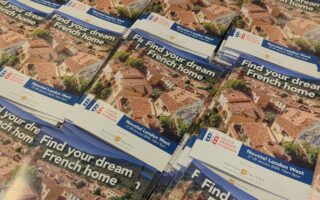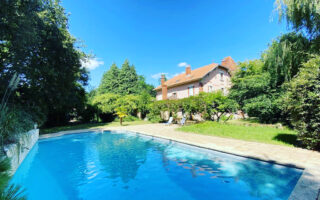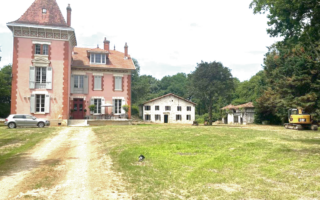A Magnificent Obsession: Château Restoration in The Loire
Case Study
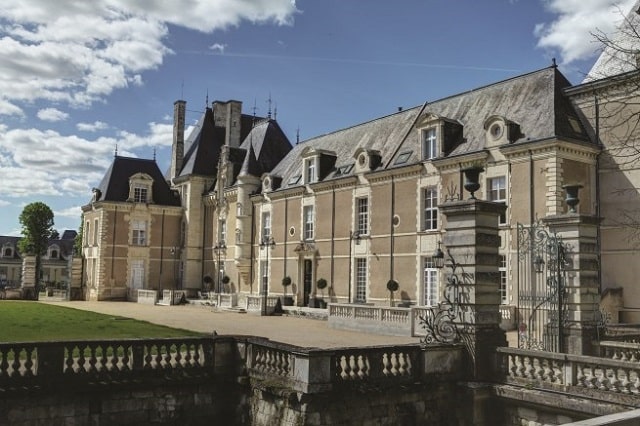
Sylvia Edwards Davis talks to Jonathan Cooke about the extensive restoration undertaken on the Château de Jalesnes at Vernantes in the Loire.
When Jonathan Cooke set out to chase his dream, of a bed and breakfast in a converted Provençal farmhouse, he would’ve been the first to be surprised that he’d end up owning a majestic château in the Loire. His dealings with the French planning, legal and banking systems, and a fractious episode with potential investors, could fill a book. Yet Jonathan and his three partners have emerged victorious, with endless stories about their renovation.
FrenchEntrée Magazine: What led you to the Loire, or was it the property that actually chose you?
Jonathan Cooke: We were originally thinking of the typical Provençal thing. This property came to us from a friend via email,
who joked that it was ‘too small’ for them. We took one look at the château, which came with 20 hectares, and said, “Oh, wow! That’s it!” We fell in love with the Loire Valley – the architecture and greenery – it’s just glorious.
FE: When was the château built?
JC: The Marquis de Jalesnes got his title in 1636, and set out to tear down the original manor house – I think it was completed in 1641. It was three times the size it is now, there were two additional wings. It was one of France’s bigger equestrian estates. They were well connected to Cardinal Richelieu’s family through marriage and moved in royal circles.
FE: How long did the whole process take?
JC: We actually started work on the grounds six months before we bought it, in November 2013. The previous owner lived here with me for six months. I took a sabbatical from work before I chucked in my job completely. We spent about three months here with all of our partners – there are four of us, two Aussies and two Brits – then I was back and forth, and this year I’m officially a full-time resident. We did a few ‘stress tests’ with friends and family, to iron out any wrinkles, and opened for business the first Bank Holiday this May – we had 37 people here so it was a ‘baptism of fire’. We’ve a ranking of 9.9 from guests on Booking.com, so that’s exceptional. I think we can safely say that we’re off to a good start.
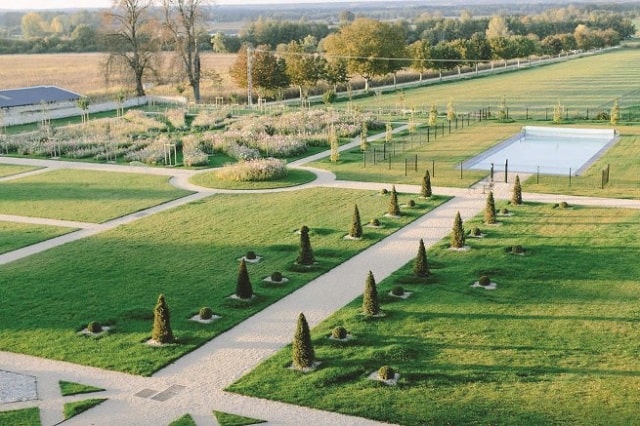
FE: can we talk about budget?
JC: We thought it was ‘the most château that we could get for our money’. We knew how much each couple was prepared to spend, and that worked out to a total of about a million Euros, realising that we’d probably spend a million and a half doing it up, all-told. We got it for under a million, which was remarkable, seeing that it was a proper château, even down to the moat, and it was in good structural order.
“The moment you let a bride through your door, you’re officially open to the public, so you’re obliged to conform to all the Espace Public rules”
FE: how did you tackle the renovation?
JC: We had a British surveyor come down – they don’t have the equivalent in France. He lived in France but was still qualified and certified in England. He came over before we signed and confirmed that there was nothing structurally wrong with the property. The inside, however, was a 1980s hospital with wards and nurses’ stations, treatment rooms, suspended ceilings, and the floors had been covered with plastic tiles. We managed to save a few ceilings, but had to reinforce the beams which, in turn, had to be protected by fireproof board. It was a bit of discovery as we went along. We had something else that they don’t have in France, a quantity surveyor, who estimated how many miles of piping we were going to need, and wiring, and how many square metres of plasterboard, so we had a good handle on the budget.
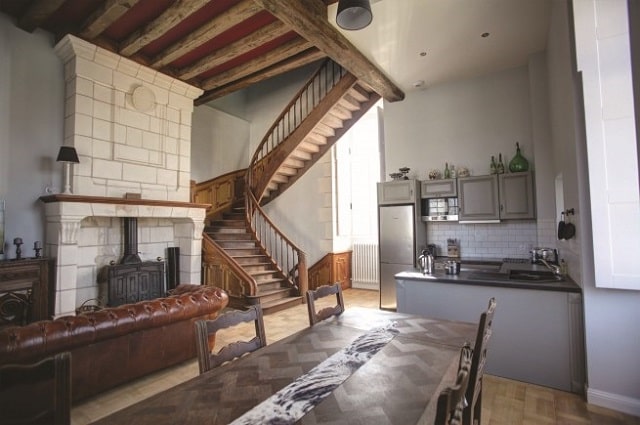
FE: So did the renovation come in on budget?
JC: We’re significantly over, probably a million or so. But that includes all the furnishings, and don’t forget that we set our original budget for creating a simple chambre d’hôtes and letting it out for a wedding or two a year. That’s when the problems started because the moment you let a bride through your door, you’re officially open to the public, so you’re obliged to conform to all the Espace Public rules – things like insulation, lighting and mobility access, not to mention all the fire stuff. So we had disappointments, like a beautiful chandelier we wanted to put up which didn’t qualify as giving off enough light, and a wonderful old wood door that didn’t have the required fireproofing. Eventually, the way forward was to juxtapose the modern with the old.
FE: Did you have to deal with historical monument approval process?
JC: No, we didn’t. We aren’t classified. We did have an ‘architect de patrimoine’ (heritage architect) in, but at our own initiative, just because they knew what they’re talking about. We weren’t obliged to have one.
FE: What’s the château’s ownership structure?
JC: We’ve an SCI (Société Civile Immobilière), which is a special form of French company designed to own buildings. My partners and I are all in our early 50s and we all wanted a change from the 9-to-5. This was a way to exorcise our notion of doing up a property in France to operate it as a B&B. The idea took on a life of its own and morphed from a modest B&B to this huge, 26-bed château. We own 52% of the company and the other 48% by fractional owners. It was very successful and there are just a few last spots available. Then there’s a company that manages the rentals of the château’s inside space.
FE: What was the process’s biggest ‘surprise’?
JC: The paperwork – I’d heard about French bureaucracy, but to see it in operation! That was the biggest hurdle. Another surprise was the unwillingness of some French companies to deal directly with us. For example, when we needed to replace the windows – there were 48 of them, each over four metres-high – no French supplier would give us a quote as they expected us to go through an installer first.
FE: how did you manage with the language?
JC: I’ve schoolboy French, but that was 40 years ago. I just came out here and had to learn in earnest. It was a case of preparing what I needed to say to the workmen each evening – on some days we had up to 50 here – so that when they arrived I could brief them. That meant quickly learning the words for a screwdriver and a length of pipe.
FE: Do you have a favourite spot in the château or its grounds?
JC: The chapel. We’ve a sound system in there and, when I need a moment, I put some music on and just sit there. It isn’t a particularly religious space – it’d been stripped out, apart from a stained-glass window. We use it for dancing at weddings and it has very nice acoustics. When everything is catching up with me, I sit there and listen to Pergolesi’s Stabat Mater – it’s neck-tinglingly beautiful.
FE: What was your worst day in France?
JC: That was definitely a fracas with some would-be investors who we fell out with. When we knew the relationship wasn’t going to work, it all came to a head and that was a horrendous day. So nothing to do with France, really, just with human nature.
FE: and the best day?
JC: That has to be the standing ovation at the Mayor’s get together two years ago. We were presented as the new owners of the château who were going to give them back their pride and joy. We said that we felt that we were merely the caretakers of a wonderful property which had been part of village life for 400 years. We said we’d do everything we could to prove that we were the right caretakers, and that when we finished our turn, we’d hand it on – hopefully, for another 400 years. It was very emotional. About 400 to 500 people all got up and applauded. People would come up to us and grab us by the hand, with glazed eyes, saying that they remembered working there when they were young. They all wanted to share a story of how the building had touched their lives. It was lovely and very, very moving.
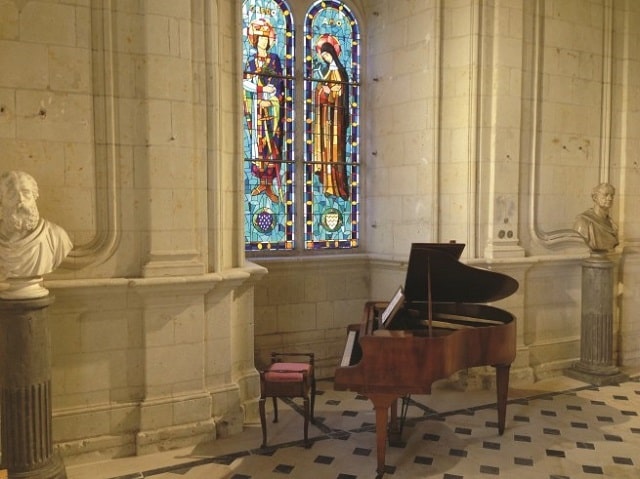
FE: With what you know now, would you do it all over again?
JC: We often say to ourselves that, in five years’ time, we’ll be sitting on the third-floor roof terrace – which we created out of an extension that the nuns built in 1910 – overlooking the beautiful countryside, and we’ll say, “…do you remember when?” Then we’ll laugh and say, “We very nearly threw in the towel, but thank goodness we didn’t”. When we get stressed, we say that we should never have done it. But then the sun comes out, the swimming pool looks inviting, everything is shiny and polished, the guests arrive and there’s music floating through the ground floors. It’s then that we look each other in the eye, the four partners, and say, “Yes, this is it – this is right”.
Meet the Mover
Name: Jonathan Cooke
Where: The Loire
Occupation:Property management
Moved in: On-and-off from 2013 and full-time in 2016
Moved from: London
Property-related business: Château de Jalesnes, a luxury, five-star destination venue with accomodation
Email: [email protected]
Website: www.chateaudejalesnes.fr
Twitter: @chateaujalesnes
Share to: Facebook Twitter LinkedIn Email
Leave a reply
Your email address will not be published. Required fields are marked *

